Chinese New Year (also known as Lunar New Year) is a holiday celebrated throughout Asia. In China, it’s known as the Spring Festival and like any holiday, special-occasion food is a major part of the festivities. Families will often hold an extravagant dinner featuring special-occasion dishes such as seafood or hot pot, many of them holding symbolic significance. Dishes can also vary greatly depending on province, as each area of China features its own distinctive local cuisine. This year, Lunar New Year falls on February 12 and is a great time to enjoy a special meal filled with family and tradition.
Whole Suckling Pig
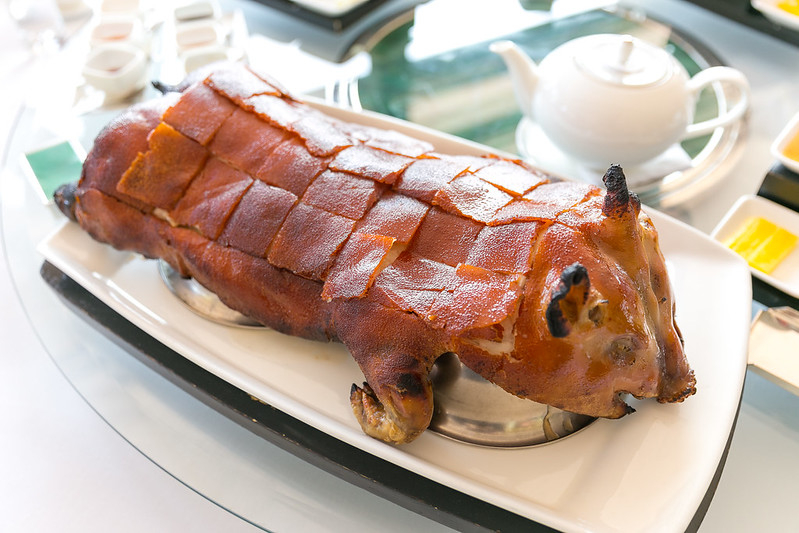
In Southern Guangdong province, diners will often find a whole suckling pig as the centerpiece of their Lunar New Year tables. Guangdong is home to Southern Cantonese cuisine, famous for fresh seafood and delicate dim sum. But Cantonese cuisine also features a distinctive regional barbecue that’s both complex and flavorful.
A special occasion dish, roast suckling pig is commonly served spread-eagle on a large plate. The crispy skin is separated from the meat, then placed back on top. Suckling pig is most often served with hoisin sauce, scallions and thin wheat pancakes. Since serving a whole animal is expensive, the presence of a suckling pig on a New Year’s table was traditionally a sign of prosperity. To obtain your own suckling pig, order in advance from your local Cantonese barbecue restaurant or Cantonese seafood restaurant.
Dumplings (Jiaozi)
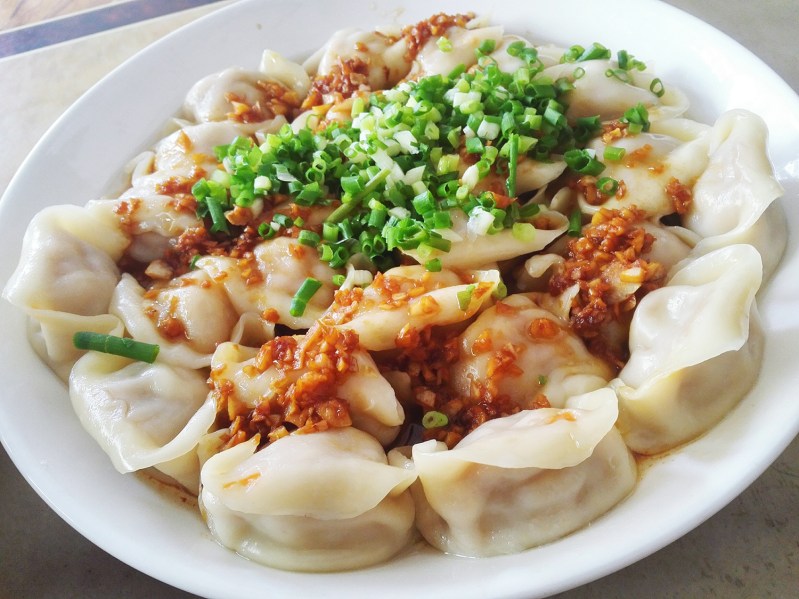
In Northern China, meat-packed boiled dumplings known as jiaozi form the basis of a central dish of Chinese New Year. For many Northerners, a hearty bowl of wheat dumplings, buns, and noodles are preferable to rice. Families will often gather around on Chinese New Year to make dumplings from scratch.
Jiaozi is usually boiled (can also be fried) and filled with several different ingredients. The most common filling is ground pork mixed with ginger, soy sauce, Shaoxing wine, and vegetables such as cabbage or Chinese leeks. Chinese dumplings generally do not include garlic and usually feature only one type of vegetable (for example, cabbage is not mixed with leeks. That combination is more common in Japanese dumplings, known as gyoza). Vegetarian fillings can include a mix of mushrooms, tofu, leeks, radish, or eggs. Wrappers can be made by hand but any local Chinese market will have pre-made wrappers. To accompany the dumplings, it’s best to dip them in a black, slightly molasses-like Zhenjiang vinegar spiked with some chili oil.
Read more: How to Make The Perfect Shrimp Dumpling
Whole Fish
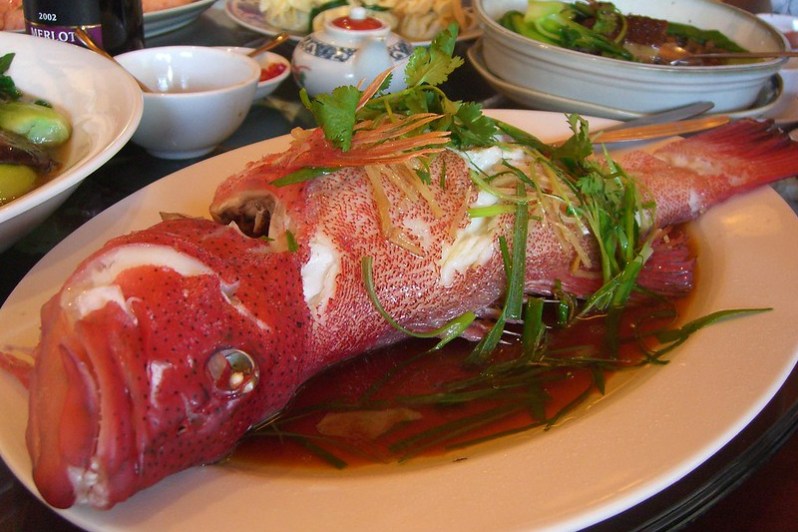
Whether steamed, fried, or braised, whole fish is served on Chinese New Year tables throughout the country as a sign of abundance. In China, celebratory meals feature the dining philosophy of da yu da rou (“big fish and big meat”). Traditionally, animal protein was used sparingly in the average Chinese meal. Many Chinese dishes utilize small pieces of meat and seafood, mostly for flavoring or stir fried with vegetables. Therefore, the presence of a whole fish or chunk of meat is an abundant and impressive symbol on the table.
Every region of China has its own preferred way of cooking whole fish. In Hangzhou, a city in the eastern coastal province of Zhejiang, fresh carp is steamed with a thick sauce of sweet vinegar. In southern Guangdong, fish is steamed and topped with a soy sauce mix topped with silvered ginger, scallions, and cilantro.
Spring Rolls (Chun Juan)
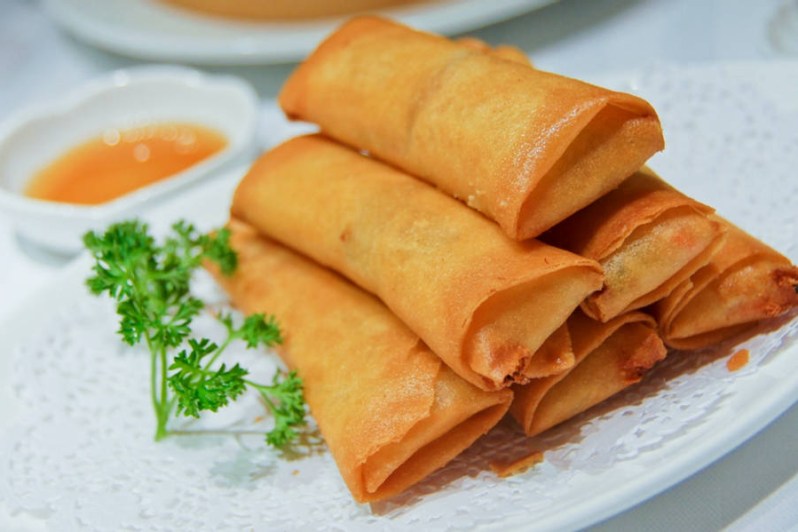
Crispy and savory, spring rolls, known as chun juan, are very popular during Chinese New Year. Made from wheat, the thin wrappers commonly contain a savory filling of pork, shredded mushrooms, cabbage, bean sprouts, and carrots. Spring rolls are deep fried and should be eaten hot.
When fried, spring rolls turn a golden color, resembling bars of gold, symbolizing the wealth and prosperity of the new year.
Cured Meats
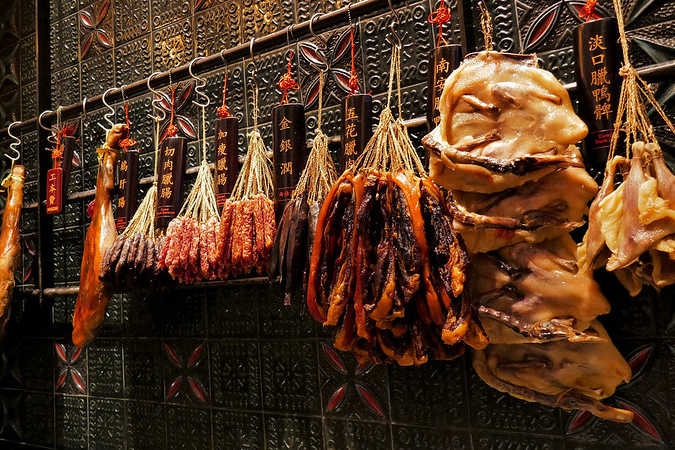
Relatively unknown in the west, China has an abundance of cured meats such as hams and sausages. In China, it’s not uncommon to see whole sides of pork, ducks, fish, and sausages hanging in the open air of an outdoor market or on the window ledges of houses.
Two of the most popular cured meats are salted, air-dried pork (larou) and sausage. Larou is often made from pork belly and served steamed or sliced thin and stir fried with vegetables. Chinese sausages resemble salami and are best served sliced thin. In the central province of Sichuan, sausages are a popular component of Chinese New Year, filled with a combination of pork, ground chilies and mouth-numbing Sichuan peppercorns.
Sweet Rice Balls (Tang Yuan)
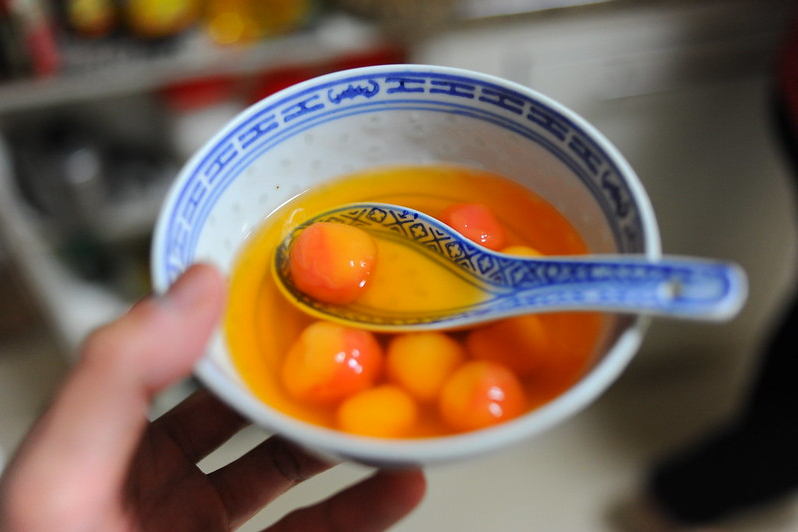
Made from glutinous rice flour and stuffed with an assortment of sweet fillings, tang yuan symbolize togetherness and family reunion, perfect for Chinese New Year. The actual rice balls are relatively mild, similar to Japanese mochi in both flavor and chewy texture. The fillings are varied, ranging from sweet red bean paste to black sesame paste. The size of a ping pong ball, tang yuan are served hot, sometimes in simple hot water or a sweet soup flavored with sweet fermented rice.
Throughout China, tang yuan are eaten at the beginning of the Lantern Festival, the end of Chinese New Year. However, in Shanghai and southern China, the rice balls are typically eaten throughout Chinese New Year.
Eight Treasure Rice (Babao Fan)
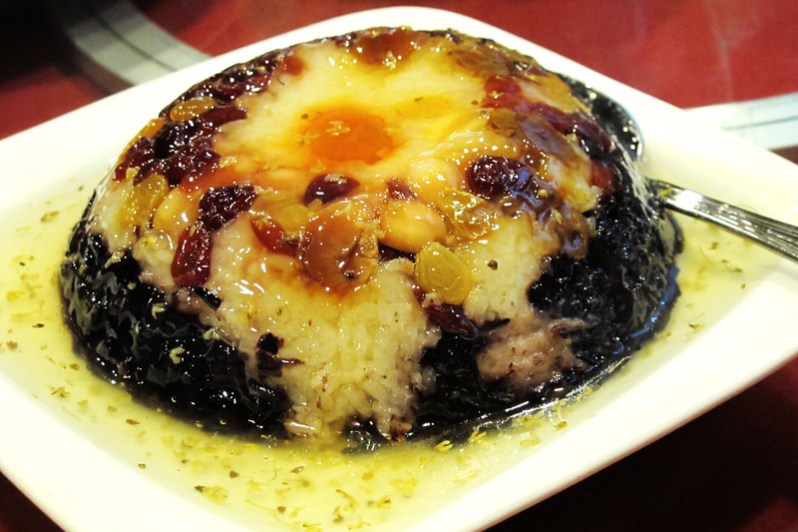
Rice is a common ingredient in Chinese desserts and Eight Treasure Rice might be the best example of this staple. This layered, sweet rice pudding represents great fortune for all who consume it. Glutinous rice is layered with an assortment of ingredients: red bean paste, lotus seeds, almonds, jujubes, candied fruits, plums, and goji berries. The actual “eight treasures” component can vary depending on the chef. The whole dish is steamed in a bowl and once cooled, is taken out and placed onto a plate, revealing each layer of ingredient for diners to enjoy.
Fruit (Oranges, Tangerines)
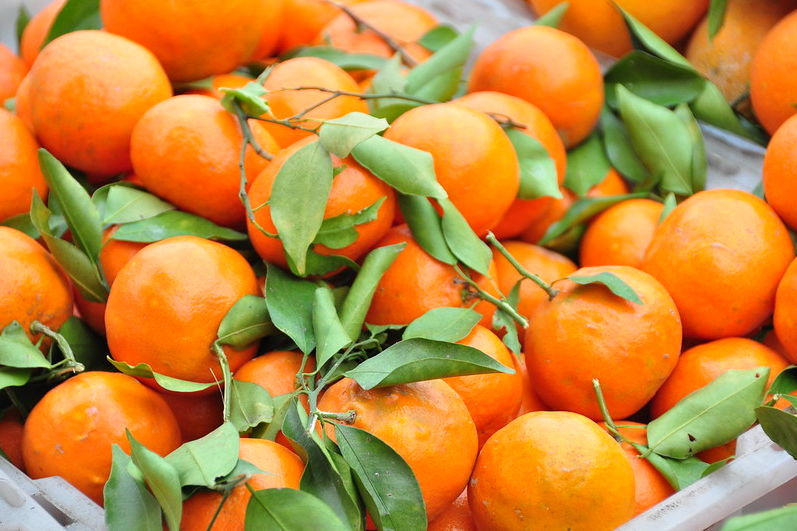
Fruit is a central part of traditional Chinese gift culture and Chinese New Year is no exception. The most common fruits are oranges, tangerines, kumquats, and pomelos. These round, golden citrus fruits represent prosperity in Chinese culture, bringing good fortune to the gift recipient. Fruit can be gifted in baskets or still attached to a small tree, which serves the dual purpose of decoration and as a refreshing dessert to an extravagant Chinese New Year’s dinner.



